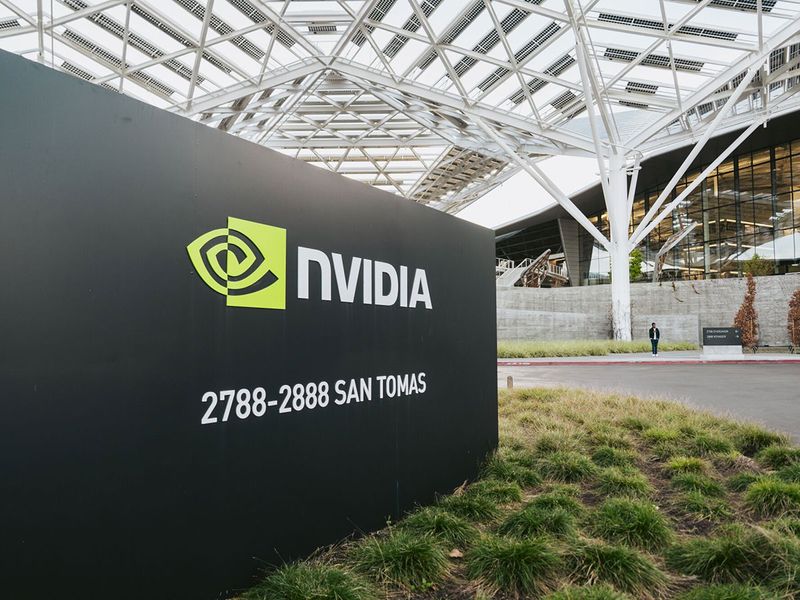
Last Friday, NVIDIA Corporation briefly achieved an extraordinary milestone, reaching a $2 trillion market capitalisation during the trading day, setting a precedent as the first company in the semiconductor industry to hit this level. This remarkable growth has positioned NVIDIA as the third most valuable company in the United States, surpassing the economic outputs of many countries.
In fact, NVIDIA’s market value exceeds the Gross Domestic Product (GDP) of all but 11 economies, including Russia, South Korea, and Australia, placing it ahead of all but eleven nations worldwide. However, it’s important to note that comparing a company’s market capitalisation with a country’s GDP isn’t a direct comparison, as GDP measures the total economic output of a nation, while market capitalisation reflects the total value of a company’s shares.
This surge in NVIDIA’s value is largely attributed to the 238% increase in its share price over the past year, fuelled by the growing demand for its graphics processing units (GPUs). These GPUs are crucial for developing artificial intelligence (AI) applications, a sector that has seen explosive growth and interest. The company’s GPUs, originally designed for video games, have proven to be highly effective for AI applications, particularly in generative AI technologies like ChatGPT. This has allowed NVIDIA to dominate approximately 80% of the GPU market.
Unparalleled efficiency
One of the driving factors of this growth is NVIDIA’s H100 GPU. The H100’s architecture is finely tuned to handle the enormous volumes of data and computation that AI model training requires. This tuning is critical as AI systems, such as generative AI platforms, depend heavily on processing vast data sets to learn and improve over time. These platforms engage in tasks like language translation, content summarisation, and image creation by training on extensive data, enhancing their capabilities through continuous iterations.
The H100’s standout feature is its unparalleled efficiency and speed in processing these AI tasks. It is reported to be four times faster than its predecessor, the A100, in training LLMs and thirty times more efficient in responding to user inputs.
For companies in the race to develop and deploy AI, the H100’s performance can significantly shorten the time to market and enhance the quality of AI-driven solutions, making it a critical asset in the AI development arsenal. However, the overwhelming demand for the H100 has led to significant supply shortages, with some customers facing wait times of up to six months. This bottleneck underscores the chip’s critical role in the current AI revolution and NVIDIA’s dominant position in the market.
NVIDIA will be soon launching its H200 GPU which would be even better than this. Moreover, NVIDIA’s rapid innovation cycle and the development of supporting technologies like the CUDA programming language, which is tailored for GPU-based computations, keep it ahead of competitors.
While companies like AMD and Intel are making strides in the AI hardware space, NVIDIA’s combination of cutting-edge hardware, a robust software ecosystem, and strategic market positioning makes it a formidable leader in the AI revolution.

Securing economic competitiveness
It is now abundantly clear that the remarkable rally in NVIDIA’s market capitalisation, propelling it to unprecedented heights within the semiconductor industry, has been primarily driven by the critical role and burgeoning importance of GPUs. As GPUs become increasingly central to the development and deployment of AI technologies. Their impact on the future trajectory of the tech industry is enduring.
This has geopolitical ramifications too. It raises larger questions about how access to good GPU’s will decide the course of AI development within the country, since AI is now being used from enhancing military capabilities to securing economic competitiveness.
This strategic importance has led nations to prioritise technological sovereignty, emphasising control over essential technological infrastructure like GPUs to safeguard national security and innovation prowess. The global semiconductor supply chain’s concentration in a few regions heightens vulnerabilities to geopolitical tensions, trade disputes, and global disruptions, prompting nations to secure or diversify their sources of critical components.
Concurrently, export controls and trade policies have become geopolitical instruments, with nations leveraging these measures to restrict access to advanced technologies, thereby fuelling an AI arms race that spans both military and civilian sectors. The military applications of AI, ranging from autonomous systems to cyber defence, further underscore the strategic value of GPUs, making their availability a focal point of national security concerns and international relations.
On the economic front, the capacity to harness GPUs for AI development is a determinant of a nation’s global economic standing, driving innovation across industries like health care, finance, and transportation. This dynamic has intensified the international competition for GPU resources, highlighting their pivotal role in a country’s technological and economic advancement.
Moreover, the disparities in GPU access risk widening the digital divide, potentially exacerbating global inequalities and hindering the development prospects of technologically trailing nations. As demand for these components surges, their distribution and accessibility have become central issues in discussions around technology, security, and equitable global development, underscoring the need for a balanced approach to managing the geopolitical implications of GPU access.
As nations grapple with the complexities of maintaining technological sovereignty in an interconnected world, the strategic management of GPU resources emerges as a key challenge. Balancing the drive for innovation with the imperatives of security and equitable access will require nuanced policies and international cooperation.
In this context, the story of NVIDIA and its GPUs is not just a corporate success tale but a microcosm of the larger, ongoing dialogue about the future of technology, geopolitics, and the global order.
Aditya Sinha (X: @adityasinha004) is OSD, Research, Economic Advisory Council to the Prime Minister of India. Views Personal.








